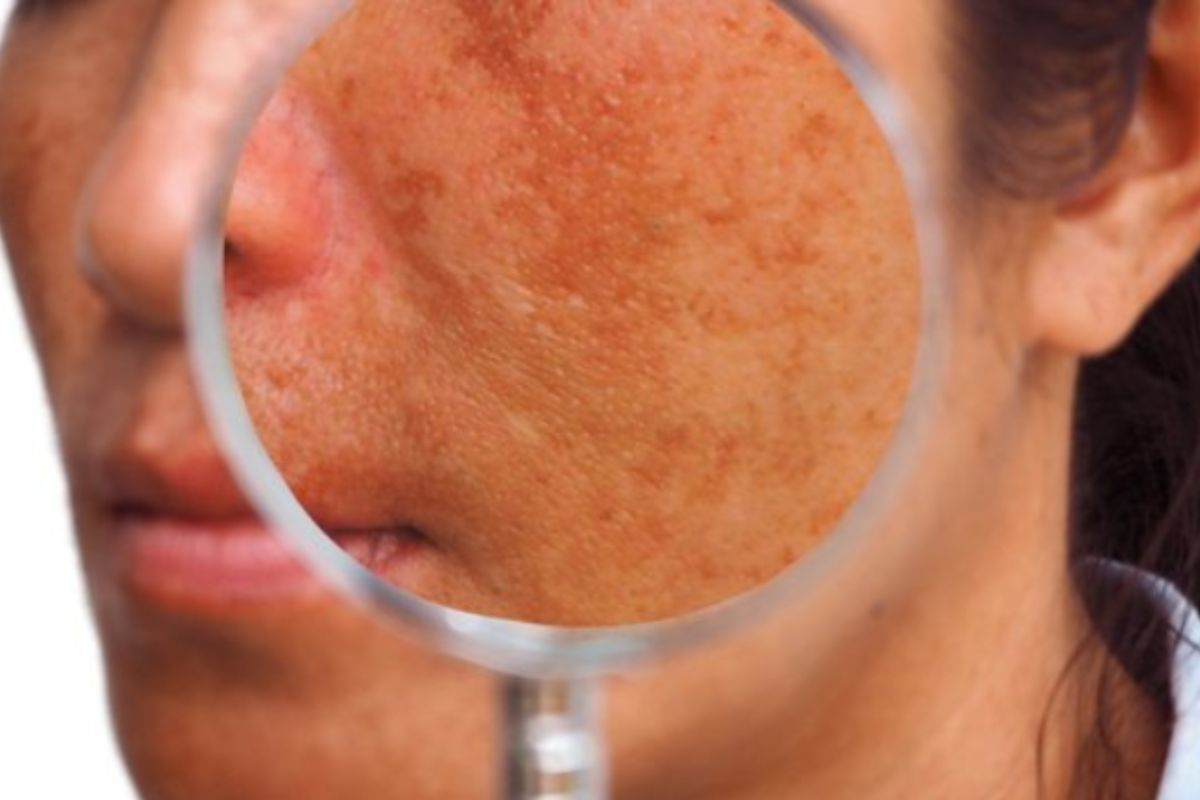"The right treatment can transform your skin, revealing the beauty that's been there all along."
Have you ever noticed uneven, brown to grey patches on your skin, especially on the face, and wondered what they could be? These patches could be a sign of melasma, a common condition affecting the skin’s pigmentation.
At NU.U Clinic, we specialise in identifying and treating various skin conditions, including melasma. Recognising the unique nature of each case, we provide personalised treatment plans and tailored care. Our approach aims to not only treat the visible signs of melasma but also to understand and address its underlying causes, offering a path towards healthier, more even-toned skin.

Melasma
Melasma is a common skin pigmentation disorder that results in brown to grey patches on the skin. While it can affect anyone, it’s most frequently seen in women, particularly during pregnancy, which is why it’s sometimes called the “mask of pregnancy”. However, it’s not exclusive to pregnant women and can manifest in anyone, regardless of gender or pregnancy status. Melasma primarily appears on parts of the face that receive the most sun exposure, such as the cheeks, forehead, nose, and chin, but it can also occur on other parts of the body exposed to the sun.
Causes of Melasma

Sun Exposure
One of the primary causes of Melasma is sun exposure. Ultraviolet (UV) rays from the sun can stimulate the melanocytes in the skin, leading to an overproduction of melanin and the appearance of dark patches. This is why Melasma is more common in areas of the skin that are frequently exposed to the sun.

Hormonal Changes
Hormonal fluctuations, particularly those involving oestrogen and progesterone, are a significant trigger for Melasma. This connection explains why Melasma is prevalent during pregnancy, with the use of birth control pills, and in some cases, hormone therapy. These hormonal changes can increase skin sensitivity to sunlight, further exacerbating the condition.

Inflammatory Factors
Inflammation and increased activity of mast cells within the skin can also contribute to the development of Melasma. This inflammation can stimulate melanocytes, leading to increased melanin production and the formation of pigmented patches on the skin.

Vascular Changes
Changes in the skin's vascular system, such as increased vascularity, can play a role in Melasma's development. The increased blood flow can stimulate melanocyte activity, contributing to the condition's characteristic pigmentation.

Skin Barrier Disruption
The health and integrity of the skin's barrier function and the basement membrane are crucial in preventing Melasma. Disruptions or damage to these areas can affect melanocyte distribution and function, leading to the development of pigmentation issues. Understanding the multifaceted causes of Melasma is essential in developing effective treatment strategies. At NU.U Clinic, our commitment to comprehensive care ensures that each patient receives a tailored treatment plan that addresses not only the symptoms of Melasma but also its root causes, offering a clearer, more even-toned complexion.
Treatments for Melasma

Dual Wavelength Long-Pulsed Laser / Alexandrite Laser Treatment
A combination of Alexandrite (755nm) and Nd:YAG (1064nm) wavelengths allows this laser treatment to target pigmentation, vascular concerns, and unwanted hair across various skin types. Adjustable settings enable tailored treatments based on individual needs while minimising the impact on surrounding tissue. A consultation with a qualified healthcare professional is recommended to determine suitability and expected outcomes. As with any procedure, individual results may vary.

Dual Wavelength Fractional Non Ablative Laser
The Dual Wavelength Fractional Non-Ablative Laser is a skin treatment that uses 1550 nm and 1927 nm wavelengths to target different skin layers. It is used to improve skin texture, wrinkles, scars, and pigmentation while maintaining the skin’s surface. This non-ablative approach delivers controlled laser energy to stimulate skin renewal with minimal downtime. It may also enhance skin permeability, which can support the absorption of certain topical treatments. As with any procedure, individual responses and outcomes may vary.

Copper Bromide Yellow Laser
The Copper Bromide Yellow Laser is a skin treatment that targets pigmentation, acne, and vascular concerns while supporting overall skin rejuvenation. It delivers precise, controlled energy to the skin, helping to improve tone and texture with minimal impact on surrounding areas. Using yellow and green light wavelengths, this treatment is designed to address redness, uneven pigmentation, and other skin irregularities. As with any procedure, results vary from person to person, and a consultation with a qualified healthcare professional can help determine if this treatment is suitable for you.

Exosomes
Exosomes are tiny vesicles or bubbles, released by cells, that facilitate communication between cells by transporting genetic information and proteins. This process is crucial for the regulation of various bodily functions, including tissue repair and cell regeneration. Particularly in dermatology, exosomes’ unique property of promoting cell renewal and repair makes them integral to strategies aimed at enhancing the health and visual appearance of the skin, thereby contributing significantly to advancements in skin care and rejuvenation practices.

Hollywood Laser Toning
Hollywood Laser Toning is a laser-based treatment designed to rejuvenate skin and address pigmentation concerns. It targets skin issues such as melasma, acne scars, and fine lines, providing gentle improvements in overall skin appearance. This non-invasive procedure involves minimal recovery time, making it convenient for those seeking visible results without significant downtime.

MicroPulse Needle RF Treatment
A skin-rejuvenating approach designed to address melasma, redness, and signs of ageing. The treatment applies radiofrequency (RF) energy through ultrafine microneedles to support skin renewal and collagen production. By interacting with dermal structures, this process helps refine skin tone, texture, and acne scars while promoting overall skin health.
Conclusion
Effectively managing melasma requires a comprehensive approach that addresses the condition’s various causes, such as sun exposure, hormonal changes, and skin sensitivity. Treatments like the Clarity II Laser, MultiFrax Laser, Dual Yellow Laser, Sylfirm with Exosomes, and Hollywood Spectra offer targeted solutions that work to reduce pigmentation and improve skin texture. Additionally, a tailored cosmeceutical skincare regimen can support and enhance these treatments.
At NU.U Clinic, we focus on creating personalised treatment plans that take into account your unique skin needs and the specific factors contributing to your melasma. This customised approach ensures the most effective management of the condition, helping you achieve a clearer, more even-toned complexion with results that align with your aesthetic goals.
"Unlocking the secret to flawless skin begins with personalised care."





 +65 6732 9989
+65 6732 9989 +65 9152 3582
+65 9152 3582